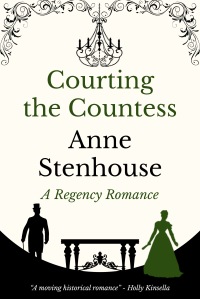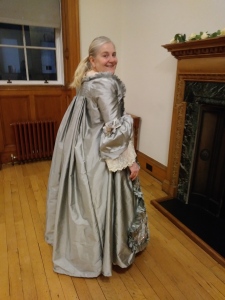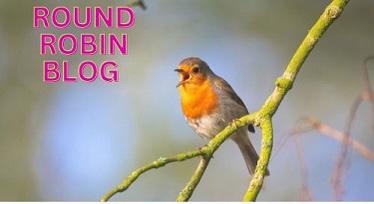Daisy’s Dilemma amazon UK – US – AU – CA


Many delegates of the upcoming RNA conference in August are currently selecting the agents/editors/publishers they would love to have a 1-2-1 with. Who, I was asked at a zoom meetng earlier this week was I targetting?
Mnm!

I did sell Courting the Countess at an RNA conference so I know how useful these 1-2-1s can be. However, I also know that I am much more stressed at conference when signed up for an interview than I want to be. Also, the writing I’ve been most engaged in in recent years has been for a specific market – DC Thomson’s People’s Friend magazine and their My Weekly pocket novels. Three of the novels, A Debt for Rosalie, Christmas at Maldington and A Maid and a Man, are now in library editions and so enjoying an afterlife.
How, you’re thinking, does this translate into a writing prompt which ought to be positive?
I do have three drafts active at present – 2 regency novels set in Scotland and the idea for a short story which popped into my head while I was on holiday in Bavaria recently. So, Courting the Countess is acting as a prompt because I know I can achieve completion of works in progress. The RNA conference is a huge prompt because, firstly, there’s an internal writing competition for one of their trophies and, secondly, hearing all about writing from your peers whets the creative appetite.
We all work at a different pace. Pop over to Capital Writers where you’ll find Cecilia Peartree drafting novel 27 in one of her series and discover that Jo Allen can draft a 27 chapter detective story in 2 hours. I think I might need a wee lie down.
So, will I/won’t I? Apply for a 1-2-1? Come by next month and find out. Meantime, remember stationary stationery reaches no editors. Keep Writing.
A wee PS At the time of writing A Maid and a Man is out on loan through the South Australia library service. Yay! And Courting the Countess is free for kindle – duration of the offer not known.
Anne

Today’s the day – publication day for the Ulverscroft edition of A Maid and a Man. It’s large print and principally intended for outlets such as libraries but anyone can buy it. If you don’t have an account with Ulvescroft you might try The Reading House.
So why is that a prompt? Nothing like a bit of visible success to spur one on.
A question authors, storytellers, writers, journalists are often asked is – “Where do you find your ideas?”
I don’t think that’s the knowledge that the question is seeking. We all find ourselves involved in stuff. Last weekend, for example, I was a delegate at the Scottish Association of Writers conference in the Westerwood Hotel. At around Midnight on Saturday, there was a small fire: in a laundry, we think. At any rate our taxi driver told us on Sunday that the Spa was closed because there were no towels!
The non-writer may log this information and carry on with their day. The writer’s brain, on the other hand, is in action. How useful to have collaboration like the information there were no towels.
Who benefits from that circumstance? Who loses out because of that circumstance? A fledgling Homewares’ Store might benefit. A wedding planner who has organised a Hen Party in the spa might lose out.
In addition, of course, there was the reaction of all of us guests turned out of our cozy beds for over two hours to stand around in the car park and then sit about in the public areas. And the performance of the local Fire Brigade and the hotel’s staff. It’s not the people watching I would have chosen but it was interesting and informative.
So, it’s not the having been there when it happened but the follow-up questions that give a storyteller their ideas. How did the person on the receiving end of the telephone call I partly heard react to being woken at 1.45 am to learn their caller was ‘fine’? Does that mark the end of a beautiful friendship – or the beginning of one?
(No one was injured and the fire was quickly brought under control.)
News recently in includes the sale of a summer story and a non-seasonal one – both to People’s Friend. Yay!
Also, work is underway on a projected Pocket Novel. It’s an Edinburgh set regency.
You may be interested, too, in the activities of my Capital Friends and can find out more about Kate, Jane, Jennifer and Sheila at capitalwriterscouk.wordpress.com
Anne

The regency novel often contains a ball scene and many of the people featured in Georgian and Regency novels spend a fair amount of their, admittedly plentiful, time learning to dance.
What Pride and Prejudice fan could fail to sympathise with Lizzie’s anguish when asked to dance by Mr Collins. If she accepts, she will face the mortification of having a partner who gets it all wrong. If she refuses, she can’t dance with anyone else that evening.
“Mr Collins…could not prevail with her to dance with him again, put it out of her power to dance with others.”
It was a big deal!
So, I took myself along to the French Institute on George IV Bridge where I spent six delightful evenings learning Mr Gow’s 2nd New Set of Quadrilles under the expert tuition of Talitha MacKenzie and in the company of some long-term devotees of historic dance.
Years and years of dancing Scottish Country Dances mean I struggled with the footwork but there are several great u-tube videos to help. I appreciated the ones from the Hampshire Regency Dancers.

What Olga, seen ablove on David’s arm, and I agreed on, was that we couldn’t work out how anyone had the breath for all those conversations we see in TV adaptations.

I hadn’t attended any of the Baroque classes but in a small company when the instructions were called, I think I managed. I did leave the party evening feeling that I could see the connections between the historic dances and the patterns of Scottish Country Dancing.
That understanding – what the patterns were and how they were danced – is going to help me understand how the characters in my novels achieved their romantic aims through dance. Maybe the carefully scripted lines beloved of historic drama ween’t a reality but the flirting through meaningful looks, squeezed hands, regretful backward glances… a term well spent.
There’s an upcoming evening at the French Institute on Parliament Square/George IV Bridge.
Baroque Dance Concert Saturday 13th April at 7pm.
Tickets on sale at https://sonas-multimedia-uk.myshopify.com
£15 / £10 (for EQS & IFE Members) + £1 booking fee
So, dear writers, what skills have you felt moved to improve or pick up in the cause of veracity?
Courting the Countess, set in Edinburgh 1819, is available on kindle or in a library. Mariah’s Marriage and Daisy’s Dilemma also from the library.
Anne

Skye has asked us to discuss: Research for your Novel – Love it or hate it? How important is it for your writing?
How important? Of prime importance. Do I love it? Yes. Do I hate it? Yes – sometimes, maybe…
Research is the foundation of all my novel writing. There’s no difference between historical and contemporary when it comes to getting the facts right.
I can’t believe that you need me to tell you about books, online sources, libraries, oral histories, phoning folk and institutions, newspapers, museums, paintings. You know that’s what writers and researchers do.
We call it work.
LOVE IT
So, what does research mean for my novel – or serial? Writing the most recent serial for DC Thomson’s People’s Friend, I wanted to show a character’s nervousness. I had her twiddle the button on her cardigan. I thought that was unassailable. Wrong. No pictures from the 1880s of women wearing cardigans popped into my head as I typed. Why? The humble cardigan hadn’t been invented is why. Two minutes research in Google and the cardigan had to come out and be replaced by the button on her skirt. Skirts had been invented by the 1880s!
What benefit does the author get from knowing that cardigans weren’t an option? The cardigan stays on the upper body and, if the buttons are closed, keeps one’s front warm as well as one’s back. Not having the cardigan option means the character needs a shawl and that’s a different set of physical behaviours. Shawls slip off the shoulders if not fastened in front or to an undergarment by a brooch or pins. A short shawl would perhaps leave the waist area exposed and chilled but a long one might tangle with one’s skirt and affect one’s gait. It could be slackened and used to cover the head in wind or rain. It could be used to make a bundle and carry stuff.
OF PRIME IMPORTANCE
In short, knowing is an integral part of understanding how the character lived. That’s what is of prime importance – How did the character live? How did they think? How did they speak – and to whom?
Research shows us the obvious, eg it took longer to get from Britain to Australia when the Suez Canal didn’t exist. And it shows us the subtle, eg with no public transport and limited access to private vehicles, most of the early nineteenth century population didn’t leave their birth area. One of the writing foibles I know I exhibit is wanting the characters to have a surname appropriate to their birth area or the birth area of their forbears. Hence the presence on my reference shelf of George Black’s erudite tome.

HATE IT?
There are the moments when you discover that a whole paragraph or even chapter is based on a mistaken idea or belief. That’s not good. It’s also the case that research is an endless field of rabbit holes and sliding into them for an hour or so is is beyond easy…
Do visit the blogs listed below to discover what my fellow robins think.
What areas of research do you, as a reader, regard as the most important for an author to have covered?
Anne
Victoria Chatham http://www.victoriachatham.com
Diane Bator https://escapewithawriter.wordpress.com/
Anne Stenhouse https://annestenhousenovelist.wordpress.com
Dr. Bob Rich https://wp.me/p3Xihq-398
Connie Vines http://mizging.blogspot.com/
Helena Fairfax http://www.helenafairfax.com/blog
Skye Taylor http://www.skye-writer.com/blogging_by_the_sea

Throughout the world in 2024 there are many disenfranchised people. It’s likely that over half of them will be women.
One of the over-arching themes of my writing is women’s path into education and greater enfranchisement.
I’ve written about women struggling to get to the local primary school – Moving On, Staying Put for DC Thomson’s People’s Friend. About women struggling to avoid a being a wife should be enough existence – Mariah’s Marriage for MuseItUp. About women fighting to attend chemistry classes and thereafter qualify as doctors – A Class of their Own for DC Thomson again. About a woman struggling to recover from injury and avoid the marriage that would rob her of her inheritance – Courting the Countess – Joffe Books.
I hope much of it with humour, drama and great dialogue (cue references to te influence of Georgette Heyer) but of course that’s for the reader to decide. I was very touched by a private messagr during the publication of Moving On, Staying Put to tell me how much it was being enjoyed as a story about where we lived. It’s lovely to hear from readers.
How does your work address an issue that is relevant on International Women’s Day?
Anne

TABBY ROYCE has been trained as an apothecary by her late papa. On Papa’s death, her brother and his new wife, turn her off and she has to find any work to survive. This in due course leads her to Edinburgh where she becomes embroiled in the activities of a medical household where the master and his steward, CAL MORRISON, are anatomists.
So, what greater prompt can there be than one of Ulverscroft’s fabulous covers. This is from the library edition of A Maid and a Man which is published on 1st April and I’d be hugely pleased if you were to pop into your local library and place an order.
PLR payments will be made in March and may I also thank all the lovely library borrowers who’ve made mine worth receiving. I notice that of my four books currently in the system, Courting the Countess was the most popular. Maybe I’ll get into the Edinburgh regency sitting in my files and finish it!
As some of you will know the PLR site was compromised, so I’m not able to add either Christmas at Maldington or A Maid and a Man at the moment. Even so, if you do borrow or reserve either, I hope you’ll enjoy.
Meantime I’ve sent off a summer short story, a non-seasonal short story and I’m working on a Christmas one. At least I don’t have to hire in a snow blower/maker.
Literary trivia for March: On a walking tour of Exeter many years ago, I picked up a meaning of ‘Living on a shoestring’. People incarcerated in the local debtors’ prison would tie their shoelaces together and lower them from their cell bars. Outside family or friends would tie bundles of food and other necessities to the shoestrings. The felon would haul them up.
Anne

Goal, Motivation, and Conflict – The difference between inner conflict and outer conflict and how it keeps the reader glued to your story.
Or:
Goal – what does your protagonist want?
This question is exercising me more than a little at present. I have a lovely female character whose story I’m desperate to explore, but what is her problem? Yes, she wants to make a success of her business. Yes, she wants to see her family happily settled. Is it enough – NO!
I need to dig a little in her past. Why would her business not be a success, I might ask myself. Has there been a public or hidden attack on it in the past? Is she beginning to understand why a particular assignment went so horribly wrong? Is the person who featured in her life then, still in her life today? Hmn! I’m beginning to find a little enlightenment here.
Why does your protagonist want it?
Moving into middle-age, as my character is, she’s spent a lot of years fulfilling joint objectives like being a good child, a helpful wife, a supportive mother. They were relevant objectives, but they are over now. She wants to make her business succeed in order to have something of her own. Also on a practical level, she needs the money to live and to support staff.
What is preventing your protagonist achieving it?
Herein lies the heart of every story. Conflict. How easy would it be for my character to put her own business on the back-burner while she assists a child/sibling/friend? That’s inner conflict. As a person used to the back-up role, she finds it very difficult indeed to keep puting her own needs first.
Overt Conflict is where the antagonist or circumstances or even the weather comes into play. An antagonist might be motivated by greed – they have a similar business and don’t want to relinquish any of the potential market. By spite – they’re just plain nasty. By love – they’re wrong-headed and think ‘the little woman’ shouldn’t have to stir in the working world.
Circumstances affect us all. Britain has just officially gone into a recession – people might regard the service she offers as wrong for this moment. Her premises might be condemned – woodworm, rising damp, loose slates.
The weather. So her transport might be off the road because of snow or flooding. Roads might be blocked because trees have come down in high winds. It might be too hot for her staff to work outside.
TENSION is part of what keeps a reader reading. If you’ve created a likeable character, the reader wants them to succeed. Conflict creates tension.
Inner: So, drop clues. Let the reader in on a conversation between the character and a relative or friend when she is on the point of offering help that will prevent her taking up that breakthrough opportunity. Leave the final decision hanging for a bit.
Outer: Let the reader hear that protagonist telling another character how he was in the area at the time your character’s business had its major meltdown – but keep it hidden from the character – till a crucial moment of revelation.
Mingled: Weather, house repairs etc are useful here. Let your character discover them and chart their apparently inexorable progress. Reader and protagonist are sharing the pain. And, of course, the joy when it resolves.

Did I mention I’m attempting to learn how to dance quadrilles? Goal – I want to know how it’s done. Motivation – I’ll have a better understaning of what I’m expecting my characters to do. Conflict – muscle memory is getting between me and any respectable performance of the steps! Even so, it’s good fun.
Fellow robins have also taken time to tell us how they do it. Check out the links below.
Anne
Dr. Bob Rich https://wp.me/p3Xihq-37G
Victoria Chatham http://www.victoriachatham.com
Connie Vines http://mizging.blogspot.com/
Helena Fairfax http://www.helenafairfax.com/blog
Diane Bator https://escapewithawriter.wordpress.com/Skye Taylor http://www.skye-writer.com/blogging_by_the_sea
Skye Taylor http://www.skye-writer.com/blogging_by_the_sea

Okay, so you’ve thought up the most delicious name for the firm that your heroine runs and you’re congratulating yourself for being so clever.
Huh!
Just check and there it is – already in use in the real world.
Drat!
Thinking cap on – the model’s, above, is very fetching. New name created and – just checked – no firm already in existence.
Yay! Back on track.
Anne

And it’s February when many publications will be running Valentine’s Day stories. This elaborate pigeon-hole set was part of the furniture in a small guest house I stayed in on Coorsica. It occurred to me then that it offered multiple opportunities for anyone with a story-telling inclination. It still does.
Where is the expected Valentne card? Can it be seen through the wrong grille? Was it always inteneded for the daughter/son of that household?
How much provocation is enough provocation to burst the lock of a neighbour’s box?
Likewise with other annual events. Some could be more pedestrian – the milk bill. Some could be financially disasterous – the time critical tax demand.
Has it turned a cog or two for you?
Moving On, Staying Put, my 1880s serial for The People’s Friend has now reached Instalment 6 and the resolutions are in sight for Mamie, Lydia and Ellen.
Fancy something longer Courting the Countess is a snip for your kindle at £2.99. Melissa Pateley finds herself in an Edinburgh household where her heart may be under threat.
Did you know that that annoying.99p habit started life as a means of ensuring the shop assistant’s honesty. As a penny change was needed, the till had to be opened. It rang a bell and the shop owner – maybe working elsewhere on the premises – could hear and know the payment was going into the till and not the assistant’s pocket. Hearsay? Fact? Undoubtedly interesting.
Enjoy February. The garden is beginning to show aconites and snowdrops. The tubs – little irises.
Anne

Happy New Year, dear readers.
It’s cold in Edinburgh although that doesn’t represent the kind of cold many people experience. My husband and I aren’t big Hogmanay enthusiasts so life is quietening down after a happy and enjoyable Christmas break. We saw family and friends and were introduced to several new faces.
On Christmas day, the capon cooked beautifully, the starter and the alternative pudding arrived on schedule and the tree didn’t fallen over. On Boxing Day, we met other members of the family and attended the one drinks’ party we’ve been invited to this year.
Are drinks’ parties out-of-fashion? Are we just becoming too old to be expected to stand for any length of time?
We held our usual family cards’ party, however, and a great time was had by all. There are leftovers. Yay! Regular readers know how devoted my catering is to the creative re-imagining of the leftover.
Tonight I’ll be cooking a trout caught by my son-in-law. Baked in butter with copious amounts of garlic and toasted flaked almonds to garnish – what could be better?
Following two+ weeks without heating, I’ll be doing some more charity knitting in 2024. Being cold is no fun.
Anne
For those with family members at the other end of the world
A writing and cats blog set in Edinburgh
Organising successful book promotion for authors. Visit the Author Services tab for more information. For book reviews from Kelly Lacey, click the Book Blog tab.
Writer, reviewer and lover of books
Curiosities, exploration, strange things and history
Author
A great big jar of bloggyness
Lover of books and book reviewer. Usually found curled up with a book.
Reading by the sea
A safe space to read about TWG's thoughts on life as a chronically ill single mum, mental health, all things books/hobbies and life in general.
Home of the #atinylife140 Blog and the writer Stella Hervey Birrell
The Website & Blog of Anne Stormont Author: Writing, Reading, Reflecting
Skipping to the Good Stuff with Jessica Cale
Science, religion & the world
And, for good measure, a bit of Cooking and Eating
The Puzzling World of Debbie Manber Kupfer
Adventures at home and abroad